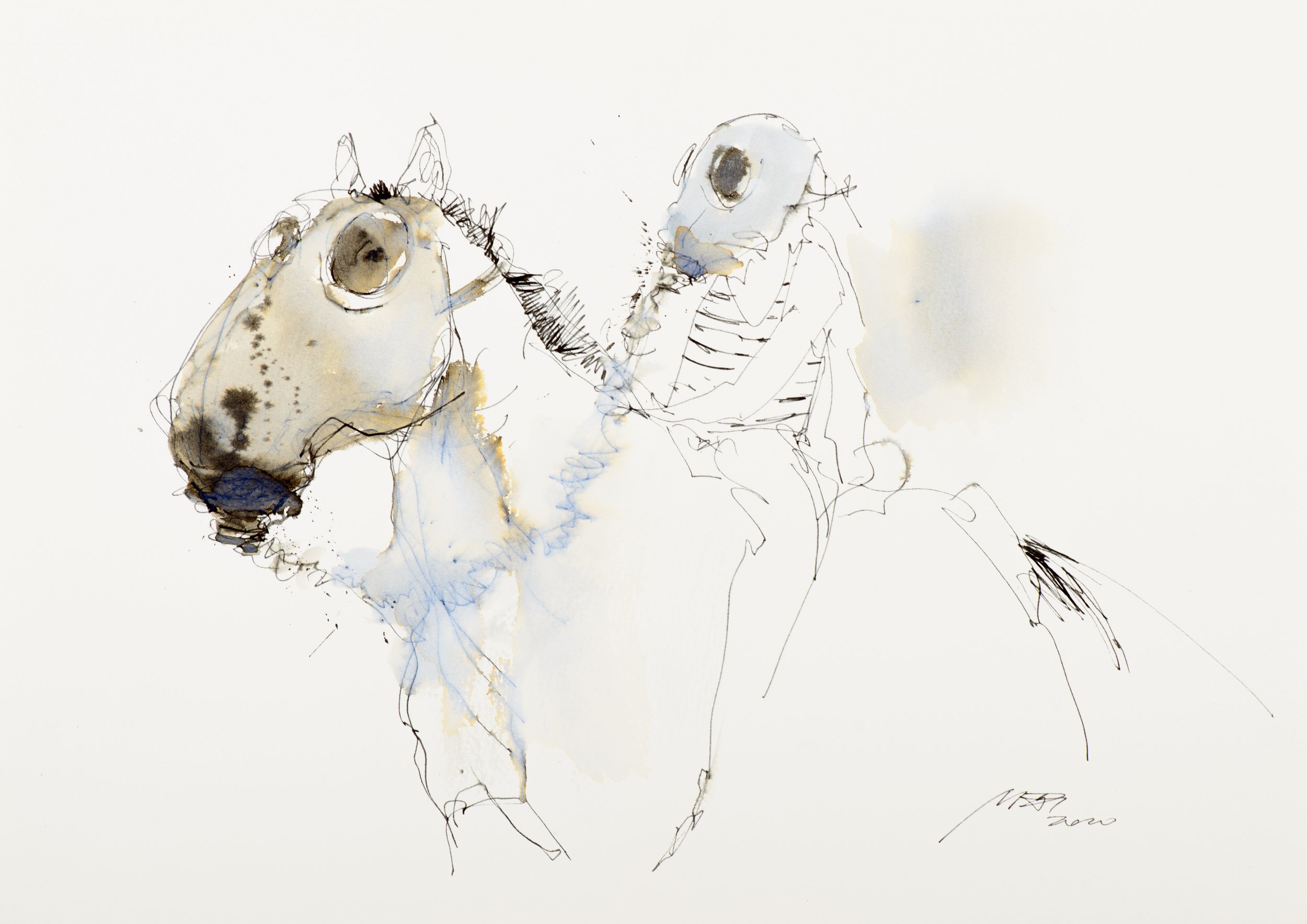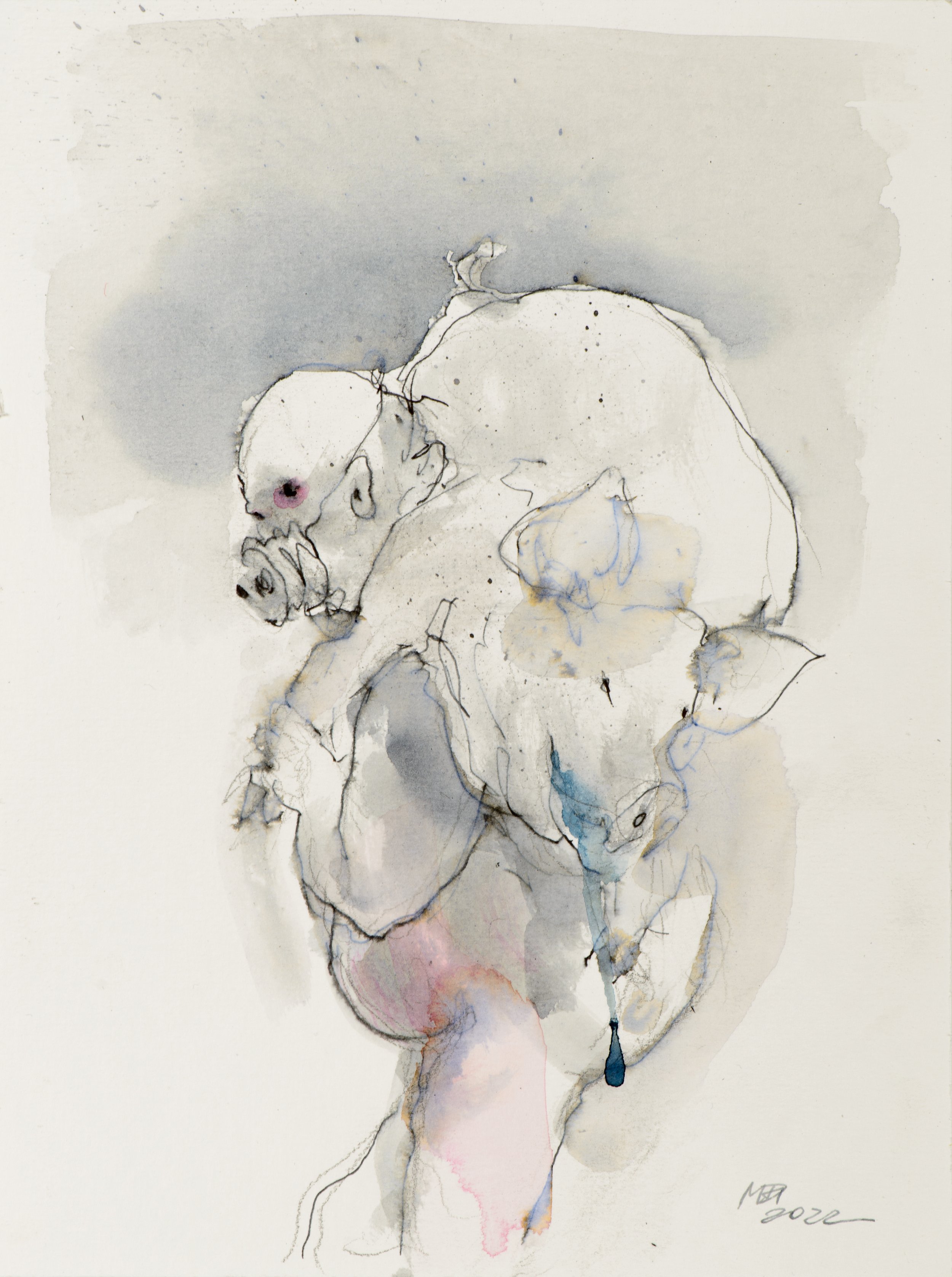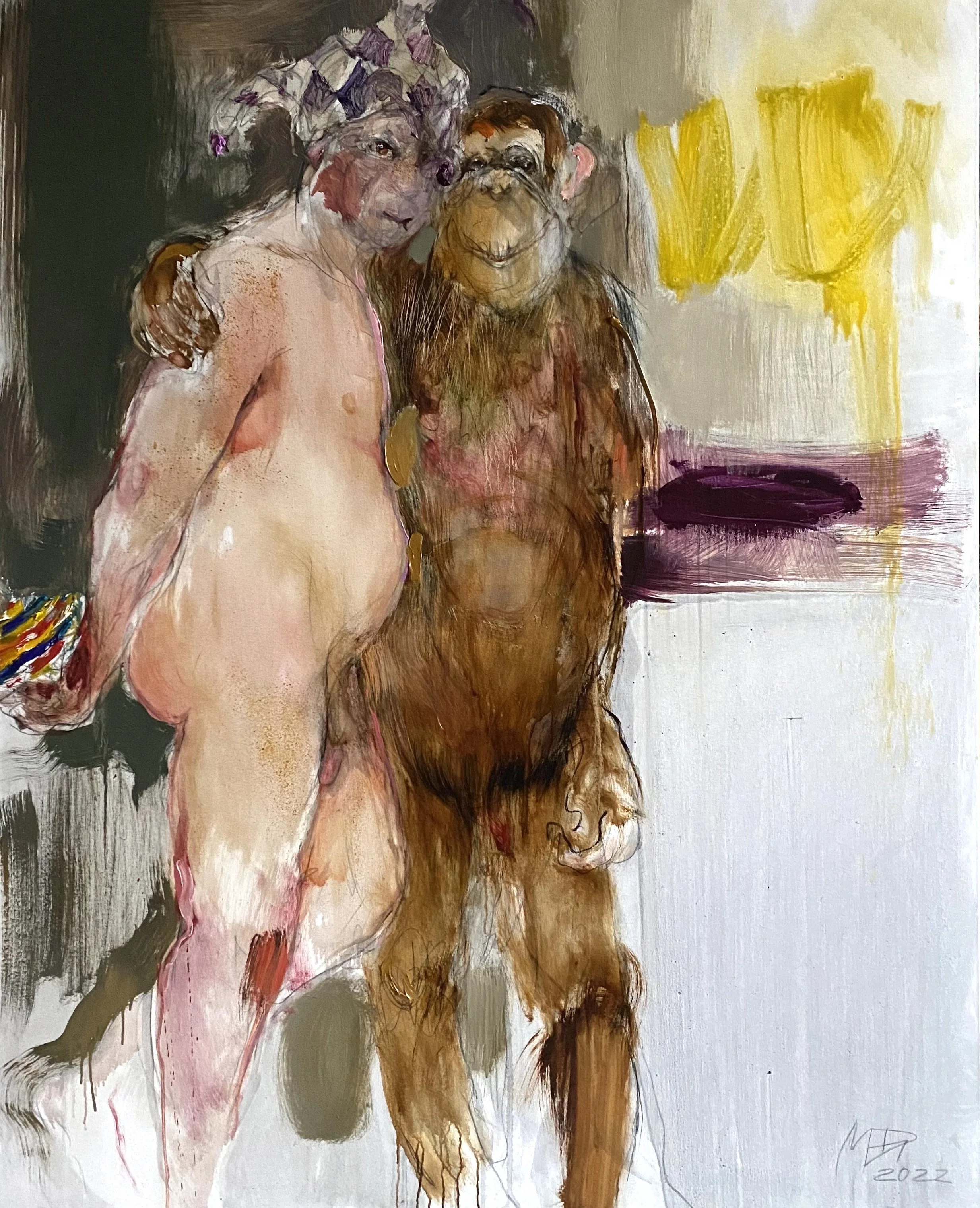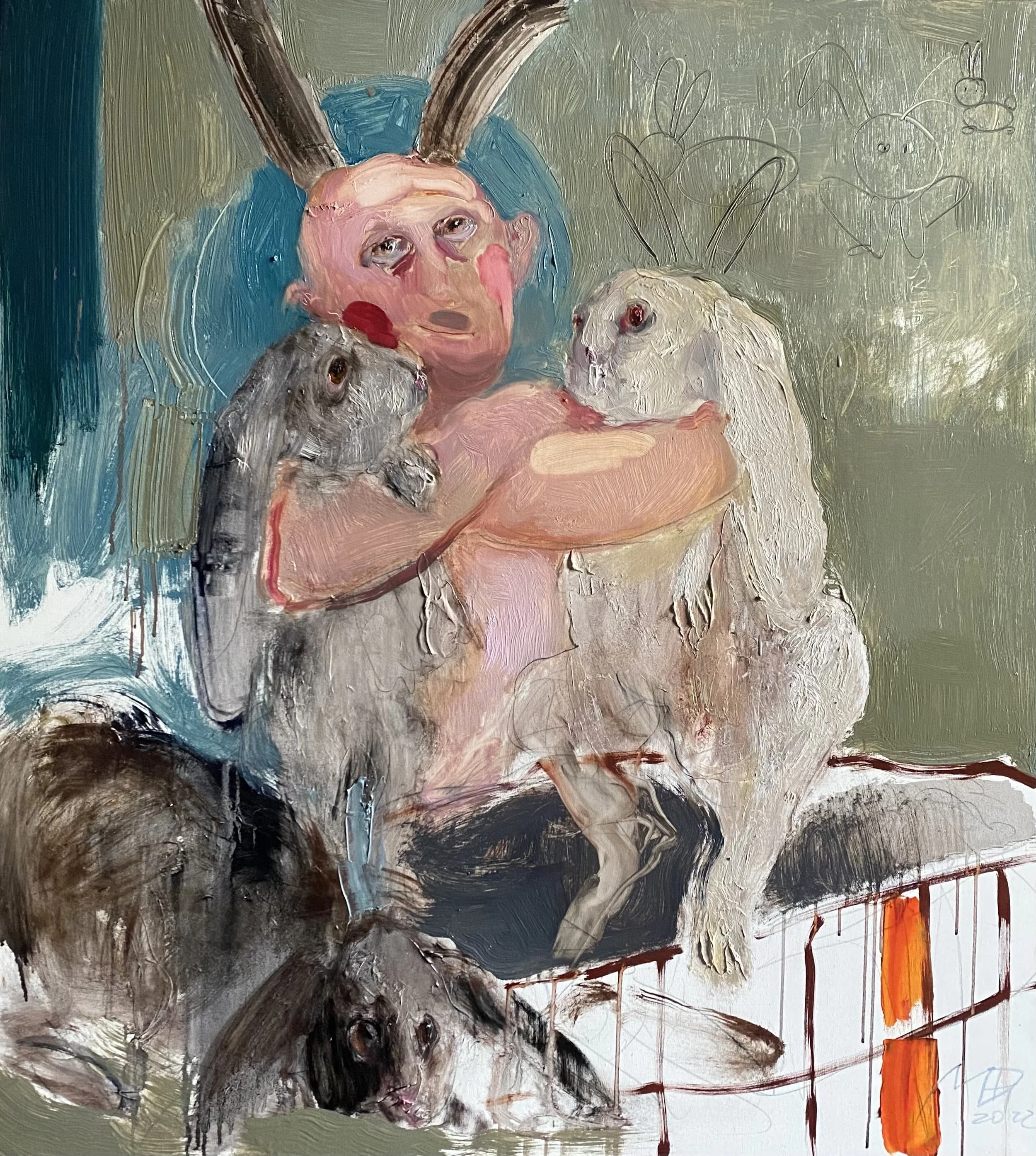Interview with Meda Norbutaité

““My paintings require acquisition and interpretation of signs through a personal view of the world. I use provocative images that incite thoughts, emotions, and invite inner dialogue with oneself, comparing observation to visually informing insights into one’s experiences. In my view, this leaves the essence of the topics proposed for reflection.””
Tell us about how you decided to become an artist
As a child, I discovered art in search of an enjoyable activity. I remember when I entered a children’s art school, I had to draw a still life with graphite pencils. At first, I didn’t understand how this could be done without colors. What had begun as a hobby, then became a life-long pursuit; I studied art throughout my education and received an MA with honors in painting - the decision to be an artist had been made. Later on I was invited to teach drawing and painting in the same university, and I found myself in the environment of fellow artists, and I started participating in exhibitions. The strengthening of my motivation to be an artist took place when my works were bought in the first exhibition and several articles were published presenting my work and me as an artist. I realized I had something to say to the world and I was on my way. I felt very fond of what I was doing and was happy to have an echo. If it is noticed, then it is needed.
What influences you the most when you are in the process of creating new artwork?
First of all - the environment. Observing the environment, people, their behavior both in specific situations and, the characteristic patterns of human behavior in communication, in certain contexts, and in response to events, gives rise to visual reflections. The creative process is multifaceted, so it is not enough just to present a verdict of sight; the processes of art in a global context must also be analyzed, and the means of expression that can be conveyed in a more suggestive and original way. When I find the content and form of a new work, and when I know specifically what I want to say, a work is born. An idea becomes a theme, and then
Platform, 2020
continues as if in cycle. Thus, one work gives birth to the next. In this way, insights and their reflection expand and refine. The same symbols can be used to say many things; they can be interpreted using the same tools to create new narratives.
Another path that leads to creative thinking is cultural heritage and national identity, and by considering these topics, I can explore more global aspects of human behavior or nation-specific patterns. When analyzing information in texts, I “summarize” it with visual summaries, which are often expressed in symbols and metaphors that convey semantic connections and essences. For example, my last works are dedicated to the analysis of the main character of the Lithuanian serpent Žilvinas, the Lithuanian folk tale / myth “Eglė the Queen of Snakes”. By delving into the material of literary sources, I discover connections with other cultures, and this allows one to expand the boundaries of the work's perception.
Which artists have most inspired and influenced you?
The first discovery, at an early age, was Peter Paul Rubens. I looked at reproductions of his work and waited for something to happen; I loved the way in which the suggestive movements of his figures are enhanced by active and energetic brush strokes. Later, I studied the details in Rebrandt’s illuminated portraits and objects and was intrigued by the relief of the strokes and the materiality that he conveyed with light and shadow. In Rembrandt’s originals, I also noticed a patina on the light strokes, which gives an even greater impression to his creations. To obtain such an effect, I use relief texture in my work as well.
My work has also been influenced by Anselm Kiefer, who creates extremely expressive, thick, and viscous relief textures. Egon Shiele, especially his drawing, became an important influence in my figurative compositions and drawings, and Anri de Tuluz-Lotrek's unfinished etude paintings as well. The deformed line of these artists gives the figures both character and intriguing movement. For me, Francis Bacon’s work features interesting transformations of figures that turn into abstractions, and lastly, I would single out Lucian Freud as influential for when I am painting naked figures from life. I especially like Freud’s plump figures, their shapes, and shades of strokes. Most recently, the conciseness and suggestive expression of Mariana Cahn and the peculiarity of Peter Doig's works, and themes have caught my attention.
My work changes expression naturally, uncontrollably. Sometimes I go back to embossed textures because they are so important to me. I’ve been painting brighter colors and enhanced humor lately - a sarcastic background accompanies almost all of my creations. The supervisor of the master's thesis, a famous Lithuanian painter, said that the young creator is characterized by dark, gloomy colors, and as he matures, his work becomes brighter, lighter and more courageous; maybe so.
Banana Sun, 2022
Your work seems to touch on themes of both connectedness and isolation, figures often exist in otherworldly settings, both strange and intimate. tell us about the themes and ideas you are working with and what you’d like viewers to experience?
I want what is portrayed to make an impact - it is important to me that the observer understands and feels the essence. In my view, there will be no persuasiveness if there is no expression that is created by colors, textures, light and dark tones.
In my newest series, "Clownary", I want a viewer to feel relaxation, inner freedom, and permission to make fun of his imperfections, habits, failures. With these paintings, I aim to create mood and bright thoughts.
You often incorporate symbolic references into your paintings, tell us about how you work with symbolism and about the meanings conveyed in these symbols.
In my work I talk about people, their behavior, and feelings. Over the last twenty years, the human himself, his fragments, joined my paintings. In order to look deeper and to convey the states and way of humans, the idea arose to express these elements through the animal. The greatest impact on the use of this creative object came from Damien Hirst's creative thinking, where aesthetics are confused with the maximally provocative idea of presentation.
The animal form has opened up opportunities for creative reflection on the human subject. Initially, I paid a lot of attention to animals’ physical presence, and then I became interested in symbolic meanings and creating narratives related to inner states. This was followed by a search for symbolic unions to convey aspects of political or social criticism. Recently, the form of an animal has become suitable for providing reflections on current ecological issues in the world. Thoughts on mythological themes such as in ‘Reincarnation’, (2020) revolve around the layers of human social life that are embodied in animals, and behavior where the human form itself transforms into an animal.
I find animal bodies - their unique shapes and textures, combined with the spiritual symbols and totems attributed to animals and the associative meanings of their forms to be compelling. The stereotypical characteristics attributed to certain animals allow me to convey the peculiarities of the human way and to offer criticism of human behavior (for example, in "Blue Blood I", 2014).
I also like the grotesque because its principles combine hostile things while maintaining the integrity of the work. The combination of beauty, disgust and humor allows you to create provocative scenes. This esoteric game of contradictions and paradoxes is fun for me in life as well. Alongside openness, there is mystery everywhere. Not everything that looks beautiful really is, not everything that looks good is good, and not everything that looks sweet is sweet.
In my opinion, the most important thing in art is depth. The life of a work is manifested through an act of contemplation, which unfolds in the origins of the creator's mindset and in the evolving reflections and sensations of the observer's work. Therefore, there is a lot of symbolism and metaphor, sarcasm and ... LOVE in my work. I avoid translating visual information into words, because this loses the essence or, even more, the opportunity to interpret when the essence opens up. My goal is to give an excuse to reflect on the topic, not to give my subjective opinion directly. In my opinion, it affects the viewer more, encourages deepening, discussion, and commenting. The picture becomes an accumulation of possible analysis options and approaches. I encourage the viewer to look for aspects and possibilities of insights that are personally relevant to him in the paintings. In this way, one idea spreads a variety of narratives.
Paintings: Can(ne)s, 2022 / Rabbitness, 2021 / After Party, 2022
Do you have a dream project? What might that be?
Yes, I have! One - is to have a show of my new cycle “Clownary”. I want to show it in nice exhibition spaces in big cities around the World so that a lot of people can see my works. It makes me happy to think that viewers might relate to the theme and become happy as well because the theme is global. I feel it is necessary to share goodness, to invite people to think about their behavior, mutual relations and do it in a relaxed form full of optimism that we can change the world and do that starting with oneself. I imagine how many good emotions are in space and hope that people come out from exhibitions with smiles. I love people. I want people to be more tolerant of each other and more attentive to each other’s emotions and feelings.
My second dream is to have a retrospective exhibition at an art museum. This would expose my main topics - “Thing” (still life), “Body” (nude), “Space” (interior, exterior), “Animal” (symbols of animals) and of course “Clownary”. That would be the whole human story from my point of view as an artist.










